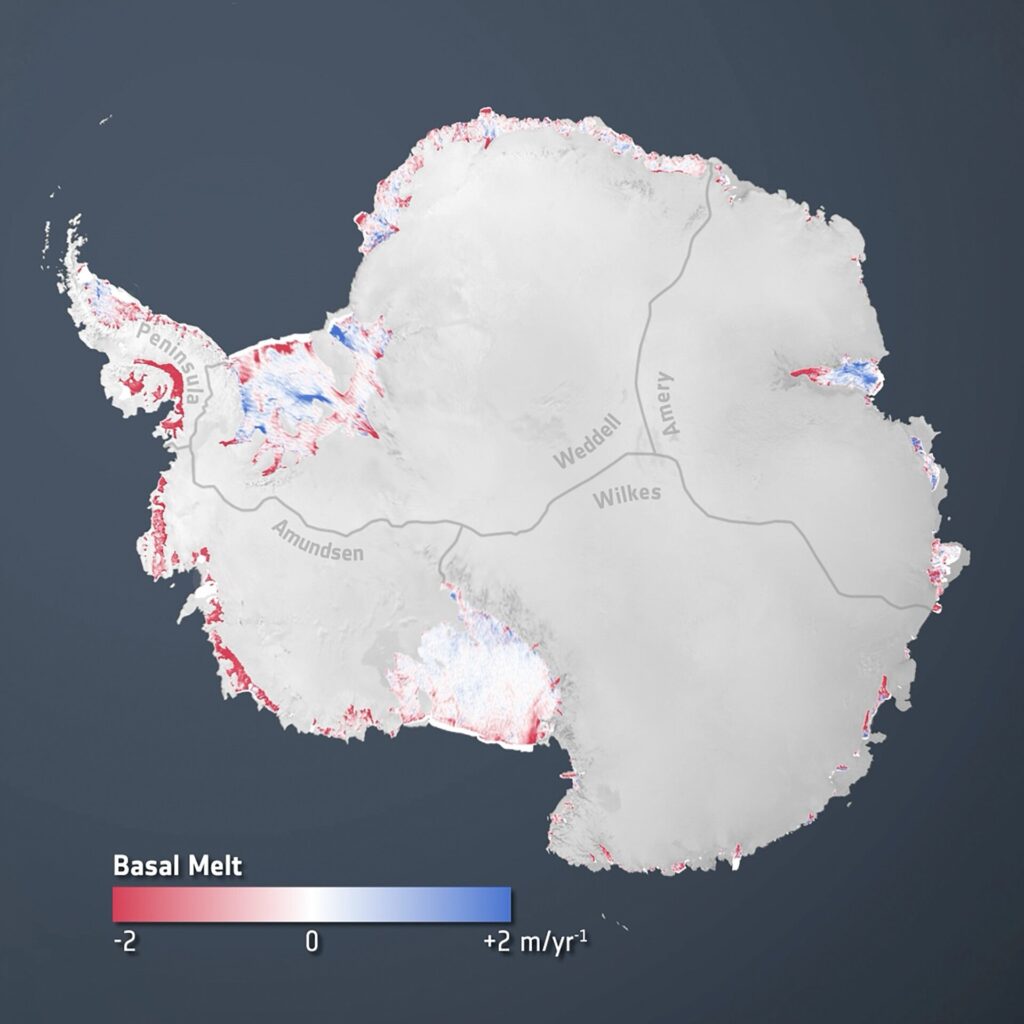The results of studies based on data obtained using the Sentinel-1 and CryoSat satellites allowed us to make worrying conclusions about the state of Antarctica’s ice shelves. About 40% of the shelves have significantly reduced in volume over the past quarter century.

Scientists came to this conclusion after studying about 100 thousand satellite radar images. The analysis showed that 71 of the 162 Antarctica’s ice shelves have reduced in volume, releasing almost 67 trillion tons of meltwater into the ocean. In addition to the fact that the shelves are losing mass, the intake of such a large amount of fresh water can have consequences for ocean circulation.
It is important to note that the pattern of destruction of ice shelves is not uniform. This is due to ocean temperature and ocean currents around Antarctica. The western part of the continent is under the influence of warmer waters. Therefore, almost all melting shelves are located in this part of Antarctica. For example, over the past quarter century, the Getz Ice Shelf lost 1.9 trillion tons of ice. Only 5% of this volume was caused by calving, when large chunks of ice break off from the shelf and fall into the ocean. The rest was caused by melting at the base of the shelf.
Similarly, the Pine Island Ice Shelf lost 1.3 trillion tons of ice. About a third of this loss — 450 billion tons — occurred as a result of calving. The rest was caused by melting. In turn, the shelves in the eastern part of the continent are protected by a strip of cold water, which allows them to be in a stable state and even increase their mass. As an example, the Amery Ice Shelf, which has “grown” by 1.2 trillion tons of ice, can be cited.
According to the researchers, they used to believe that most of Antarctica’s ice shelves went through cycles of rapid but short-term reduction and then slowly recovered. Instead, the satellites show that almost half of them are reducing without any signs of recovery.
Earlier we talked about how an iceberg the size of the Kyiv reservoir collided with an island.
According to https://www.esa.int
Follow us on Twitter to get the most interesting space news in time
https://twitter.com/ust_magazine
